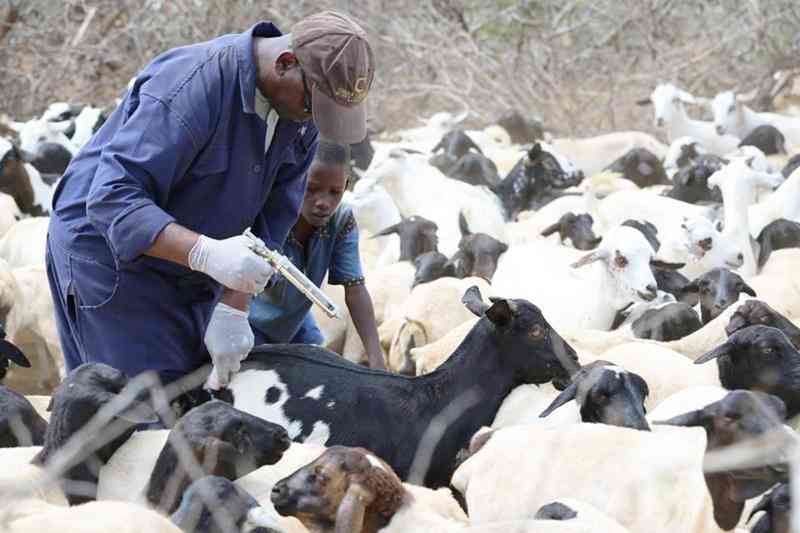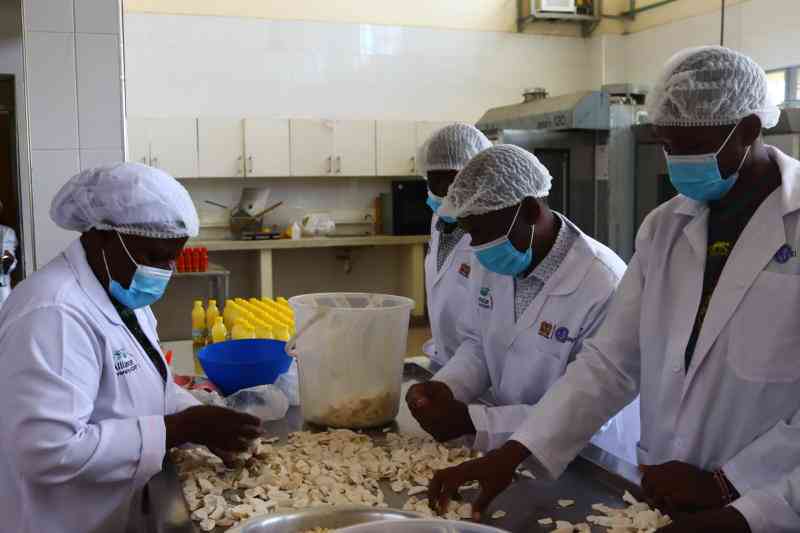
After decades of losing livestock through preventable disease, Turkana pastoralists will now benefit from an electronic disease detection system.
The technology uses smartphones to monitor animal diseases in livestock.
County Pastoral Economy Executive Philip Aemun said through use of the community-led syndromic livestock disease surveillance, herders in remote villages will collect and transmit surveillance data to veterinary officers who will be responding swiftly to ailments.
"Through the e-surveillance system we are currently conducting a targeted vaccination of livestock against Peste des petits ruminants (PPR)," Aemun said.
Livestock keeping can be quite a hustle when it comes to disease control. It can be a great loss to the farmer if one is not well prepared. You need to be able to identify the symptoms of the disease and treat it properly.
A farmer should be on the lookout of the following common livestock diseases.
Foot and mouth
This is a highly contagious disease that causes wounds almost the same as blisters on the tongue, nose, mouth and toes of the animals. It mainly affects all cloven-hooted animals including cattle, swine, sheep and goats. According to world organization for animal health, the animal may experience fever, depression, hypersalivation, loss of appetite, weight loss and a drop in milk production. It can cause death in young animals. The disease is transmitted through coming into contact with all excretions and secretions from infected animals.
You require to restrict access to livestock and equipment, controlled introduction of new animals, monitoring and reporting illness, appropriate disposal of manure and dead carcasses and proper hygiene and disinfection of livestock pens, buildings, vehicles and equipment.
Brucellosis
This disease is caused by bacteria that can be spread from animals to human. It is spread by infected animals during calving. The disease is transferred to humans by consuming unpasteurized milk from infected cattle. There are different strains of Brucella bacteria whereby some can be seen in cows, others in dogs, pigs, sheep, goats and camels.
It can be prevented by ensuring that your cattle are bred and bought from a reliable source, avoid borrowing or lending calving equipment and isolating pregnant or infected animals.
Anthrax
It is a highly infectious and deadly disease that mainly affects hoofed animals like cattle, sheep, goats, deer and sheep. According to Pashu Sakhi Handbook, it is caused by a relatively large spore-forming rectangular shaped bacterium called Bacillus anthracis. The disease is contracted when the animals swallow anthrax spores during grazing on contaminated pasture.
Regular vaccination of animals can help control the spread of the ailment.
Want to get latest farming tips and videos?
Join Us
 The Standard Group Plc is a multi-media organization
with investments in media platforms spanning newspaper print operations,
television, radio broadcasting, digital and online services. The Standard Group
is recognized as a leading multi-media house in Kenya with a key influence in
matters of national and international interest.
The Standard Group Plc is a multi-media organization
with investments in media platforms spanning newspaper print operations,
television, radio broadcasting, digital and online services. The Standard Group
is recognized as a leading multi-media house in Kenya with a key influence in
matters of national and international interest.
 The Standard Group Plc is a multi-media organization
with investments in media platforms spanning newspaper print operations,
television, radio broadcasting, digital and online services. The Standard Group
is recognized as a leading multi-media house in Kenya with a key influence in
matters of national and international interest.
The Standard Group Plc is a multi-media organization
with investments in media platforms spanning newspaper print operations,
television, radio broadcasting, digital and online services. The Standard Group
is recognized as a leading multi-media house in Kenya with a key influence in
matters of national and international interest.







